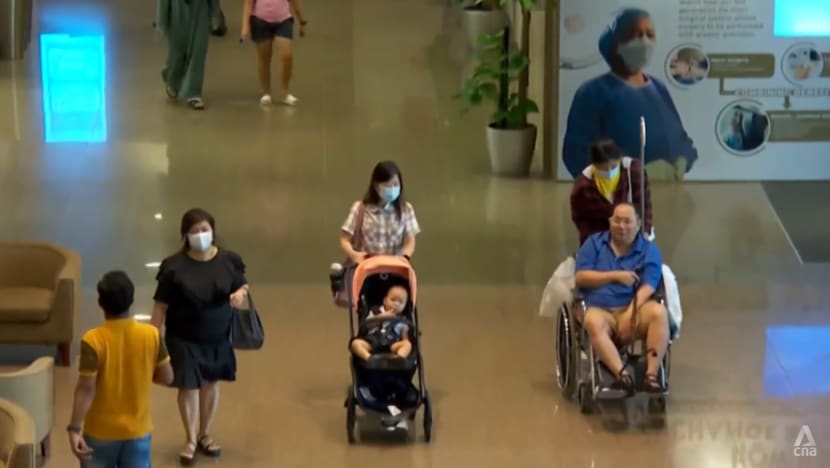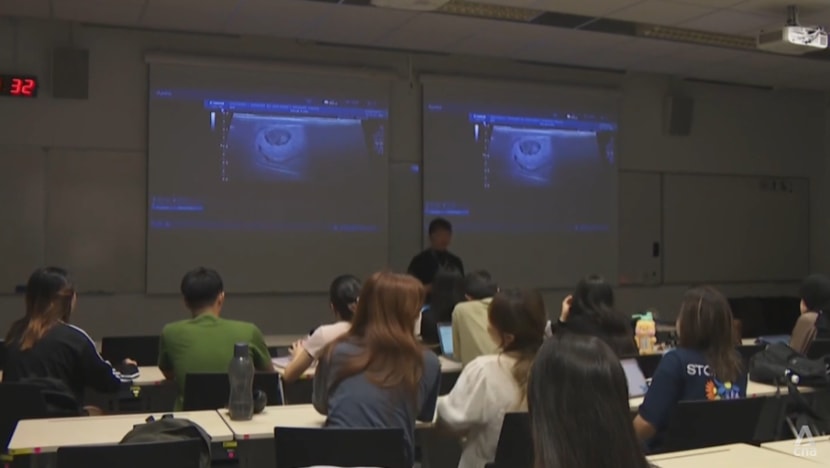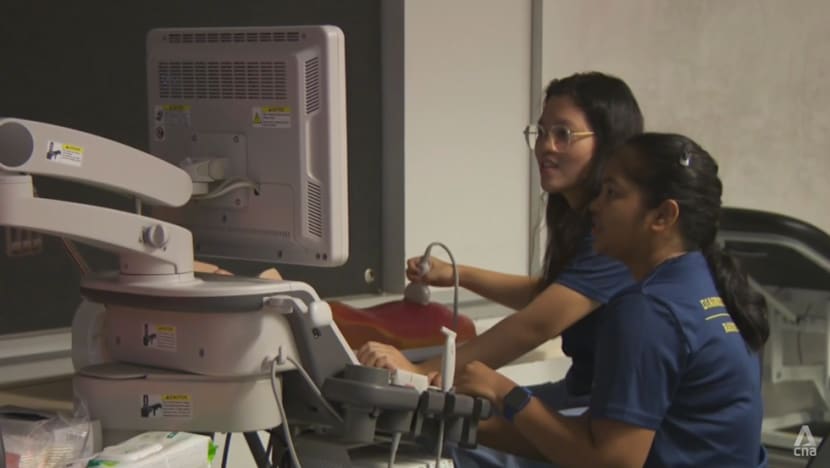Singapore hospitals struggle to meet demand for radiographers, pharmacists amid shortage in healthcare workers
Industry players said the shortage is driven by multiple factors including an ageing population, new technology, and the expansion of healthcare infrastructure.

The crunch has been getting worse since the COVID-19 pandemic, as institutions continue to tackle an ongoing lack of nurses and allied health professionals.

This audio is generated by an AI tool.
SINGAPORE: Some critical healthcare roles in Singapore, such as radiographers and pharmacists, are in short supply, according to a few private hospitals.
The crunch has been getting worse since the COVID-19 pandemic, as institutions continue to tackle an ongoing lack of nurses and allied health professionals.
Industry players said the shortage is driven by multiple factors including an ageing population, new technology and the expansion of healthcare infrastructure.
As the nation ramps up its commitment to preventive healthcare, healthy living, and early screening, a rise in demand for such roles is contributing to the manpower crunch.
“Currently, other than nurses, we are looking for radiographers, as well as sonographers and pharmacists,” said IHH Healthcare Singapore’s chief people officer Gan Kian Keong.
“These are the critical positions because right now, Singapore is focusing a lot on preventive medicine. So there's a lot of need for executive health screening and so we need these workers to do the checks on patients.”
The healthcare group operates Gleneagles Hospital, Mount Elizabeth Hospital, Mount Elizabeth Novena Hospital, and Parkway East Hospital.
To fill the gaps, it has turned to overseas recruitment, particularly from countries where qualification is recognised by the Health Ministry’s (MOH) Allied Health Professional Council (AHPC). For example, in the field of radiography, these nations include Malaysia, Australia, New Zealand and Britain.
ALLIED HEALTH PROFESSIONALS IN TRAINING
To meet the labour crunch, education institutions are working to train future allied health professionals to join the around 7,000 currently practicing in Singapore.
At the Singapore Institute of Technology’s (SIT) four-year bachelor of science with honours Diagnostic Radiography programme, students learn to produce medical images of the human body, which are typically used to diagnose or treat illness or injury.
The equipment they handle includes X-ray, ultrasound, computed tomography (CT) and magnetic resonance imaging (MRI).

Associate Professor Sharon Wong, the programme’s leader, said that while there is no shortage of applicants each year, it is challenging to shortlist candidates with the right calibre.
“To be a diagnostic radiographer, you need to have precision, the eye for detail. They also need to position patients, handle equipment settings and produce very clear and accurate images for diagnosis,” she said.
“They also need communication skills, and empathy and compassion, which are very important in the healthcare setting because we want to provide a positive experience for our patients.”
Third-year student Lerene Tong trained as a cardiac technologist before taking up the course.
She said she decided to switch her field of expertise as radiography is a meaningful profession to her.
“My experience as a cardiac tech helped me see that it is very important to have good diagnostics – it's crucial to saving patients’ lives. A good diagnostic versus a bad one could mean life or death for a patient. And this is why I chose (radiography),” she said.
Radiography is an increasingly sought-after skill. An internal survey by SIT found that its entire cohort of about 100 graduates last year found a job in the sector.
Prof Wong attributed it to a sector eager to fill vacant positions and the programme’s close links with the industry.
“The curriculum is crafted in conjunction with a close connection with industry partners. It is recognised by the AHPC. At the point of graduation, (our students) are actually (already) registered to perform as a professional radiographer in Singapore,” she said.
CHALLENGES IN ATTRACTING AND RETAINING STAFF
However, the healthcare industry is not without its challenges.
Ms Tong said that many of her colleagues often juggle a heavy patient load, and face exhaustion and fatigue.
She hopes more can be done to attract and retain talent in the sector, such as encouraging more respectful attitudes toward healthcare professions and better work environment including more rest hours.

Her fellow classmate Ruth Wong said that more awareness of allied health professions is needed to attract more people to explore working in the industry.
“Sometimes when we are doing X-rays, patients mistake us for doctors. I think not a lot of people actually know about the role of radiographers in the hospitals,” she said.
“But radiographers are very important in the diagnosis of patients. So it's important to spread awareness about our role.”
The shortage of radiographers can be seen in the struggle the department faces in covering its workload when one colleague is on leave, she added.
Both students recently completed stints in hospitals for their month-long clinical placement focused on X-rays.
NURSES ARE ALSO IN SHORTAGE
The lack of talent to fill these critical roles is piling the pressure on hospitals at a time when nurses are already in short supply.
To cope, healthcare providers and operators are also looking overseas.
IHH Healthcare said it is recruiting from Indonesia and India to fill its ranks, as well as previously less explored markets such as China and Taiwan.
It also offers education sponsorships for students, and provides incentives for its current staff, such as transport for those living across the border.
“For our Malaysian nurses living in Johor Bahru, we have arranged a bus to commute them between JB and Singapore to work,” said Mr Gan. “This will help them alleviate the cost of living issues.”
Similarly, Mount Alvernia Hospital said it is also facing a lack of allied health professionals and nurses, adding that the shortage is caused by more such workers leaving to work abroad.
“Nurses are leaving Singapore for overseas, such as Australia, New Zealand and Canada where overall cost of living is lower and they get to be with their family as they are given long-term visas to live there,” the hospital’s spokesperson told CNA in a statement.
MORE HEALTHCARE FACILITIES BEING BUILT
Industry players said that as the number of healthcare institutions increase in Singapore, the shortage of workers looks set to be more dire.
“In the next few years, as more hospitals open up, the demand for healthcare workers will continue to increase,” Mr Gan said.
“The urgency is now. We need to work together and increase the number of workers so that we can have a more equal share across all the hospitals.”
Singapore has been building up capacity to meet the increasing demand for healthcare services. According to MOH, eight hospitals and specialty centres came into operation in the past eight years, while seven more are in the pipeline.
However, Mr Gan said that IHH Healthcare has contingency plans in place and expects to cope well with their staff strength in the immediate future.
“We have been proactive to plan for this foreseeable demand and plan for the attrition,” he said. “We are actually well positioned to weather the next few years.”
There are about 58,000 nurses, allied health professionals and support care staff in both the public and private healthcare sectors.
By 2030, MOH expects increase the number of such staff to 82,000.


















